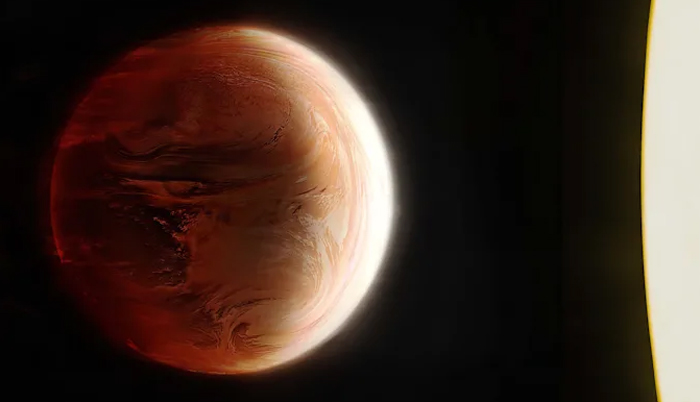![]() Home > Space & Science
Home > Space & Science
Scientists Study A 'Hot Jupiter' Exoplanet's Dark Side In Detail For The First Time

Mikal-Evans
![]() February 22nd, 2022 | 15:01 PM |
February 22nd, 2022 | 15:01 PM | ![]() 317 views
317 views
ENGADGET
Iron clouds and titanium rain, anyone?
Astronomers have mapped the atmospheres of exoplanets for a while, but a good look at their night sides has proven elusive — until today. An MIT-led study has provided the first detailed look at a "hot Jupiter" exoplanet's dark side by mapping WASP-121b's altitude-based temperatures and water presence levels. As the distant planet (850 light-years away) is tidally locked to its host star, the differences from the bright side couldn't be starker.
The planet's dark side contributes to an extremely violent water cycle. Where the daytime side tears water apart with temperatures beyond 4,940F, the nighttime is cool enough ('just' 2,780F at most) to recombine them into water. The result flings water atoms around the planet at over 11,000MPH. That dark side is also cool enough to have clouds of iron and corundum (a mineral in rubies and sapphires), and you might see rain made of liquid gems and titanium as vapor from the day side cools down.
The researchers collected the data using spectroscopy from the Hubble Space Telescope for two orbits in 2018 and 2019. Many scientists have used this method to study the bright sides of exoplanets, but the dark side observations required detecting minuscule changes in the spectral line indicating water vapor. That line helped the scientists create temperature maps, and the team sent those maps through models to help identify likely chemicals.
This represents the first detailed study of an exoplanet's global atmosphere, according to MIT. That comprehensive look should help explain where hot Jupiters like WASP-121b can form. And while a jovian world such as this is clearly too dangerous for humans, more thorough examinations of exoplanet atmospheres could help when looking for truly habitable planets.
Source:
courtesy of ENGADGET
by Jon Fingas
If you have any stories or news that you would like to share with the global online community, please feel free to share it with us by contacting us directly at [email protected]